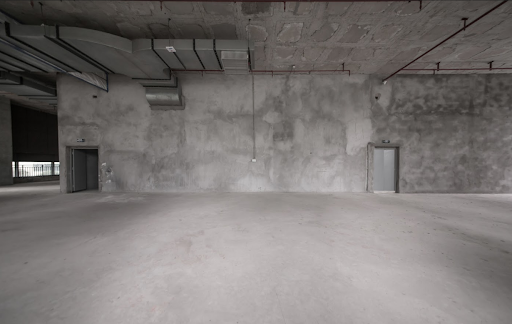What is Concrete Densification?

Concrete densification is recommended for all industries, but especially those in the food and beverage or pharmaceutical industries. Since concrete is naturally porous, it can be damaged from simple things like accidental spills. Concrete densification improves the hardness of your concrete floor, so it can better stand up to spills, leaks, and other accidents.
What is Concrete Densification?
Concrete densification is the process of applying a chemical hardener to your concrete floor to increase its durability. A concrete densifier can be applied to either a polished or unpolished floor. Concrete produces a byproduct called free lime, which is a fancy name for calcium oxide or CaO. Calcium oxide is also known as quicklime and is a key ingredient used in the production of cement. When a densifier is applied to the concrete floor’s surface, it creates a chemical reaction with the free lime, which hardens the surface and helps fill in the pores.
This ultimately helps to strengthen the floor and expand its lifespan. In fact, a well-maintained densified concrete floor can last around 20 years.
Benefits of Using Concrete Densification
Regardless of the industry, there are a number of benefits to using a densifier on your concrete floor. Here are just a few of them:
- They get glossier over time with routine cleaning
- Also, they don’t peel or discolor, so you have a better-looking floor that lasts longer
- They are easier to clean, which is great in the event of accidental food, chemical, or beverage spillage
- In addition, they are stain- and abrasion-resistant
- They add value to your concrete floor in the event you ever have to sell your existing property
- They’re extremely versatile to use and easy to apply
In addition to all of the reasons mentioned above, concrete densification saves you time and money since it doesn’t get easily damaged with routine wear and tear or foot traffic. This keeps money in your pocket longer, so you can focus on other things in your budget.
How to Use a Concrete Densifier
Before applying a densifier, you want to make sure your concrete floor is clean. Your floor should be free of any dirt, debris, or other grime. Failing to do this step might impact how successful the rest of the process is.
Once the surface has been wiped clean, a solvent will be used to wipe away any difficult stains or grease spots. After the solvent has dried, the densifier will be sprayed. When applying a densifier, there are a couple of things to keep in mind. First, it’s important to keep the surface saturated so that all the pores can be sufficiently filled. The second is that it can start to react with your floor’s surface in as little as two hours.
When Should a Concrete Densifier Be Used?
There is no hard or fast rule when it comes to applying a densifier to your concrete floor, however, most experts agree that it has the best results when applied 14-28 days after the concrete has cured. Unlike other types of materials that have to dry out to be ready for use, concrete has to cure. In order for concrete to cure, it needs the proper amount of time, moisture, and temperature to become ready for full use.
This time frame ensures that there is enough calcium hydroxide for the densifier to chemically react with. On average, the chemical reaction can last up to two months.
Should Densifier be Applied Before or After Stain?
Truth be told, it depends on the kind of stain you use. Concrete stains are categorized into three categories:
- Film-forming: These are the most common type of concrete stains and have been around the longest. This adds color to the concrete surface but can wear down over time.
- Acid: These are generally more expensive than other types of stains. This chemically reacts with the concrete’s minerals to create a marble pattern.
- Penetrating: This is designed to penetrate the concrete pores and bond with them. They come in a variety of colors and can be mixed together to create different hues.
If you’re using an acid stain, for example, you’ll want to apply the densifier afterward to make sure it goes on (and stays on) effectively. However, you technically can apply the densifier before or after you stain your concrete surface.

